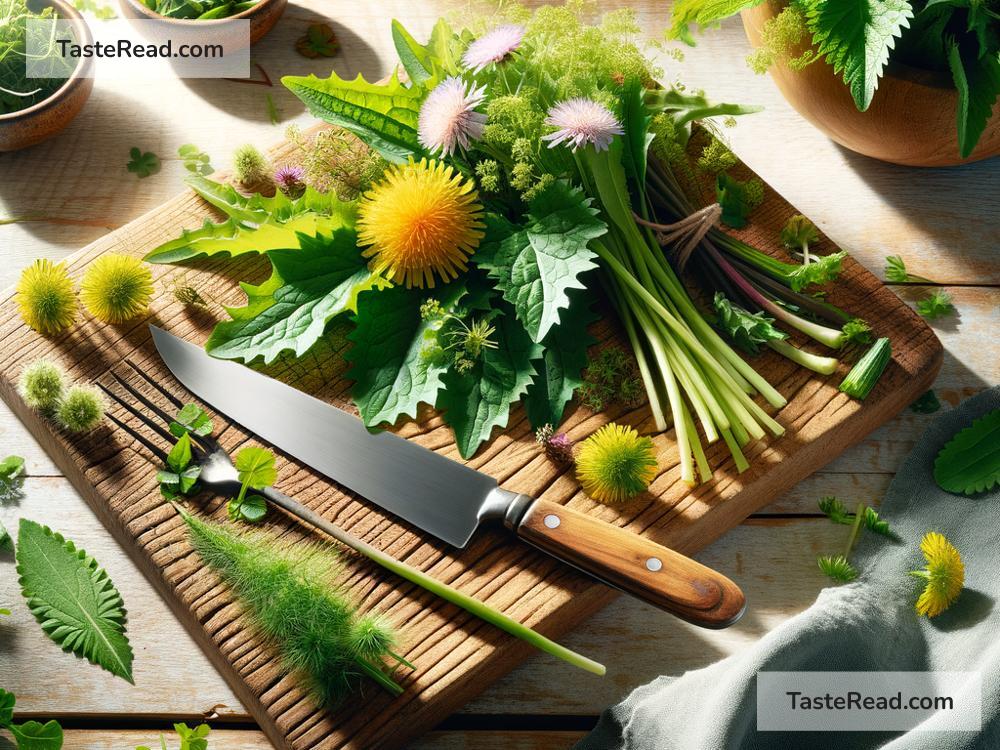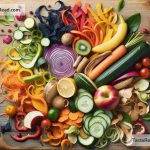Title: Unlock Nature’s Pantry: Cooking with Edible Weeds for Eco-Friendly Free Ingredients
Picture this: You’re strolling through your garden or a green stretch near your home, and there, amongst the so-called ‘unwanted plants,’ lies a treasure trove of delicious, eco-friendly ingredients. Yes, I’m talking about edible weeds! These plants, often overlooked and undervalued, can actually become the star ingredients of your next meal. Cooking with edible weeds is not just a step towards sustainable living; it’s also an adventure into a world of unique flavors and nutrients.
Why Edible Weeds?
-
Eco-Friendly Choice: By foraging locally, you’re cutting down on the carbon footprint associated with transporting food from far-off places. Edible weeds grow abundantly without any need for cultivation, making them a super sustainable option.
-
Nutritional Powerhouses: Many of these wild plants are rich in vitamins, minerals, and antioxidants, offering a healthy boost to your daily diet.
-
Free Range, Literally: What’s better than free food? These plants grow wild and free, requiring no investment from your pocket.
-
Explore New Flavors: Edible weeds offer a range of unique tastes that can elevate the flavor profile of any dish.
Identifying Edible Weeds
Before you start, it’s crucial to learn which plants are safe to eat. Books on foraging and online resources can be great places to start. Ensure you’re 100% certain of a plant’s identity before consuming it. Some commonly found edible weeds include dandelion, purslane, nettle, and chickweed.
How to Harvest
Once you’ve identified them, harvesting is the next step. Here’s how to do it sustainably:
– Pick young, tender leaves: They’re more flavorful and tender.
– Leave plenty behind: Ensure the plant can continue to grow and reproduce.
– Be mindful of your surroundings: Avoid collecting near roadsides or areas that might be contaminated with pesticides.
Scrumptious Ways to Use Edible Weeds
Now, let’s dive into the exciting part—cooking with these greens. Here are a few ideas to get you started:
1. Dandelion Green Salad
Dandelion leaves have a slightly bitter taste, much like arugula. They make a fantastic base for a fresh green salad. Just mix them with your favorite salad ingredients, add a drizzle of olive oil, a squirt of lemon, and enjoy!
2. Sautéed Purslane
Purslane is juicy and slightly lemony. It goes well sautéed with garlic and a pinch of salt. Serve it as a side dish, or add it to tacos for a juicy crunch.
3. Nettle Soup
Yes, nettles sting, but once cooked, they lose their sting and reveal a rich, spinach-like flavor. Boil them into a simple, hearty soup, blending with potatoes for creaminess and seasoning with salt and pepper.
4. Chickweed Pesto
Chickweed, with its mild, grassy flavor, can be a great base for a pesto. Blend it with garlic, nuts, parmesan cheese, and olive oil for a pesto that’s delightful with pasta or as a spread on toast.
5. Herbal Teas
Many weeds like dandelion roots, nettle, and even Pineapple weed can be dried and steeped to make refreshing and healthful herbal teas.
Final Thoughts: Foraging Etiquette and Safety
While the idea of foraging is exciting, always practice responsible foraging:
1. Positive Identification: Never eat anything unless you’re 100% certain of what it is.
2. Permission: If you’re foraging in areas not your own, ensure you have permission from the landowner.
3. Sustainability: Take only what you need and leave the area as undisturbed as possible.
Cooking with edible weeds opens up a world of flavor and nutrition that most people overlook. It’s a step towards a more sustainable and conscious way of living. By integrating these wild ingredients into our diet, we not only discover new tastes but also reconnect with nature in the most delicious way possible. So, the next time you see those “pesky” weeds in your garden or on your nature walk, remember—they might just be the key ingredients for your next culinary adventure. Happy foraging!


